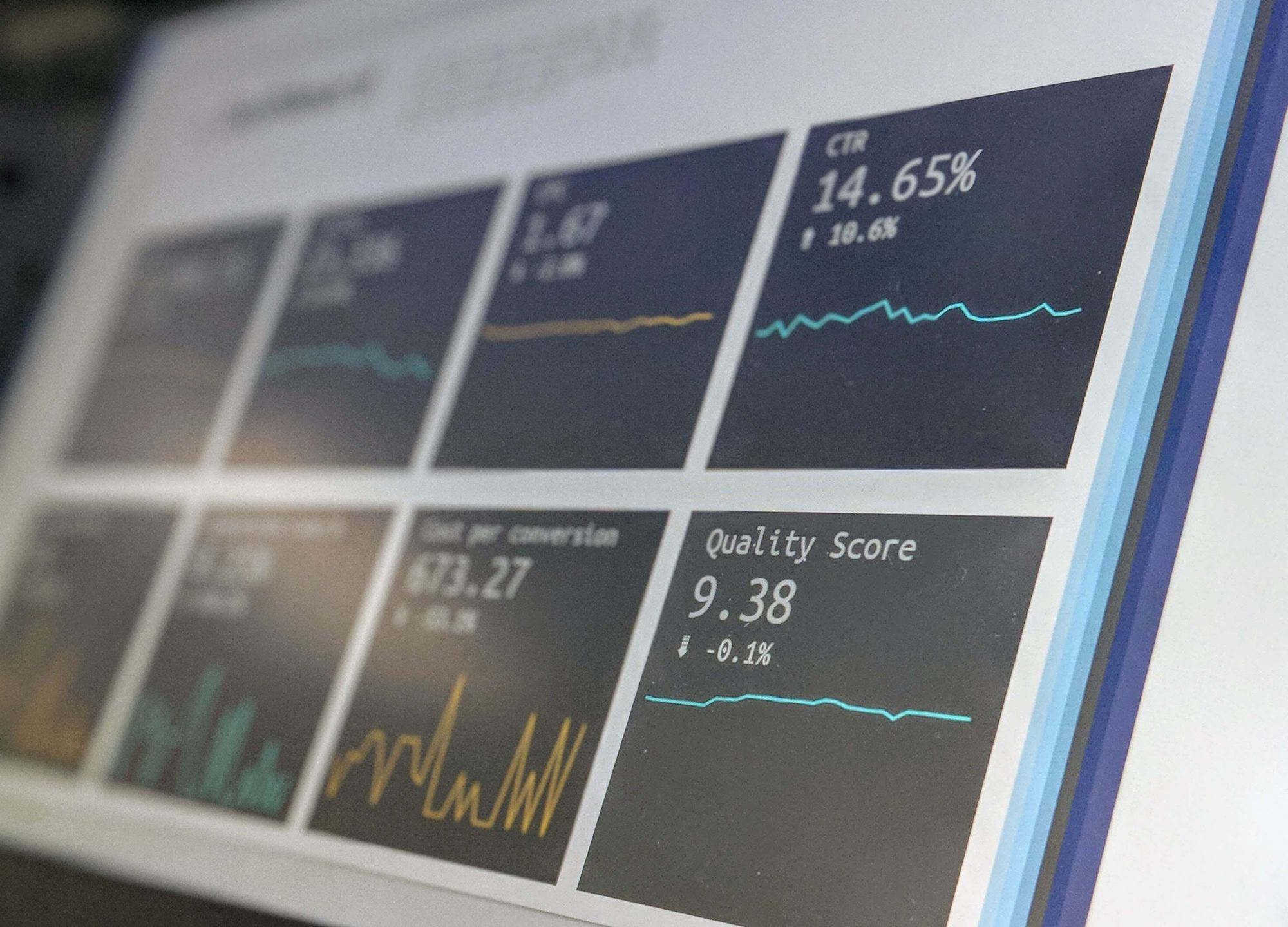Marketing automation is the process of leveraging technology to automate marketing tasks and workflows. This can include email campaigns, social media campaigns, website tracking, etc.
It’s a powerful tool for businesses of all sizes that allows them to automate their marketing processes, which results in increased revenue and improved ROI.
In this article, we’ll be taking a look at how you can increase your revenue with marketing automation, including:
- The benefits of marketing automation
- Examples of marketing automation and how to implement them efficiently
- 5 ways to increase revenue with marketing automation
The benefits of marketing automation
There are many reasons, so we’re gonna highlight some of the best:
Reduce costs and do more
With some well-placed marketing automation, a small team can be more agile and create and run more campaigns because you’ve automated time-consuming tasks. A smaller team can then do more, reducing staffing costs.
Be more creative
Do you know what allows people to be more creative? Giving them creative things to do! Repetitive tasks are literally mind-numbing - if your marketing team is just doing the same monotonous processes over and over, they aren’t exercising the creative parts of their brains. The more time they devote to creative issues, the better at being creative they’ll be.
They’ll also likely be much happier and satisfied with their roles, making it much easier to retain employees. And it just keeps going from there: more creative, effective marketing results in more revenue, and that creative work will allow you to attract creative people who want to work for you.
Refine your measuring and testing
Having all of your marketing channels controlled through a single platform allows you to compare them more easily and develop effective KPIs (key performance indicators). You can see which channels are growing the fastest in terms of audience and engagement, as well as which ones are generating the most leads.
You’ll be able to run A/B tests more effectively, allowing you to produce marketing that gets better results. All of which means you’ll be able to…
Invest your resources more effectively
With better testing and automation, you’ll be able to see which aspects of your marketing strategy both need or are worth investing in more, which should produce a better ROI (return on investment).
Develop your omnichannel strategies more effectively
One of the most difficult aspects of developing an omnichannel strategy is keeping track of all the moving parts. Having aspects of your channels automated and controlled in one place will allow you to develop a strategy that works across them all.
You’ll also be able to see which parts of your audience overlap (e.g. people who follow you on multiple social media networks, or how many email subscribers also follow you on social media).
You’ll then be able to target them across all the applicable channels, or (in the reverse) ensure they aren’t being bombarded by the same message over and over if your testing has found this to be an irritating detriment to your success.
Upsell and cross-sell more effectively
With the right testing you’ll be able to get a good picture of exactly which customers are the most opportune to upsell or cross-sell, and the points in your marketing funnel when this is most likely to work.
You can then automate the process so that these messages are hitting your audience’s screens just when they want or need them, all of which will boost their customer lifetime value.
Customize more easily
Contrary to what you might think, a correctly set up marketing automation system actually makes it easier to send tailored and customized emails.
With enough data and the right parameters, you’ll be able to send out hundreds, thousands, or even millions of customized marketing messages, a process that could take a ridonkulous amount of time without automation.
Keep track of your leads
Leads are the lifeblood of B2B marketing, and many marketing automation platforms allow you to compile a database of them all, no matter which channel generated them. Having them all in one place will make it much easier to coordinate lead nurturing strategies and allow you to be more efficient in turning leads into customers.
Examples of marketing automation and how to implement them efficiently
Email marketing
Email marketing is an essential part of B2B marketing, so making it as efficient and easy as possible is a must.
But if you’re crafting each email individually, it'll take a long time to do even if you have just a small email address list of 100, and you can’t get away with sending out a mass email as you’ll be in danger of a pretty serious data breach if you share your whole address book.
Email automation at its most basic allows you to send many emails to many people all at once. But you can go further than this and schedule them all to go out at a certain time when your audience is most likely to read them. You want them dropping right into the top of their inboxes, so there’s no scrolling.
For example, if you’re sending an email newsletter with some pieces of interesting content, maybe you’d want to send them just before your audience’s lunchtime, so they can have a read while they’re on a break.
A good email automation system will actually keep track of when people are opening your emails, so you can target the times with the highest volumes.
Even if you’ve got an international audience, you can have the system take different time zones into account, which is much easier than staying up until 3 am so you can send an email to someone on the other side of the world.
But that’s just scheduling emails, automation also includes emails that can be triggered by your target market and customer’s actions.
Have they just signed up for your email subscriber list? It’s much more effective to have an automated system in place to send a welcome email than an actual person sitting there waiting to see a new name appear on your address list.
Got an important event coming up? Send a reminder to those who have agreed to come containing the details. Even just sending a receipt and a thank you after purchase. All a lot easier with an automated email system with an autoresponder system
Then there are automated “drip campaigns” or “email journeys”, which are scheduled to go out at set times as your audience moves through your marketing funnel, with the aim of pushing certain actions by your customers or moving them further along the funnel.
Here are some more examples of automated drip campaigns (all of which are so much easier to keep track of when they’re automated):
Product enhancement/education
If your customer has just purchased a new product or service, send them an email guiding them to content or videos which will help them make the most of it. Customer satisfaction = repeat customers, simple as that.
Promotions, upselling and cross-selling
Your target audience is more likely to buy from you if they're already your customers.
Sending them an occasional reminder of the wider range of products and services you provide, particularly if they’re related to the products and services they’re already purchasing from, perhaps with a discount (because who doesn’t love a bargain?), really can’t hurt.
Re-engagement
Not heard from a client for a while? Had someone hovering around one section of your funnel for too long? Hit them up with an email that can nudge them into action.
With automation, you can test when leads are most likely to respond well to these types of emails and set it up so they receive these emails when they’re most susceptible.
Social media
Whether your B2B marketing strategy covers a multitude of social media channels, or you’re laser focussed on just one (if we had to hazard a guess, probably LinkedIn), automating aspects of social media is an absolute godsend.
The most obvious benefit is being able to schedule posts ahead of time. Getting a week’s or month’s (we wouldn’t recommend going beyond that, you need to be ready to adapt your social media posts and content to trends and current events) worth of social media posts prescheduled is much more efficient than posting manually.
Just like with email, you can track when your posts are getting the most views and engagement and schedule your posts to coincide with those times.
It’s also easier to have the posts published outside of office hours (like at the weekend or national holidays). Once again, it’s pretty much essential for any business looking to use social media for international audiences. No one wants to be getting up at 5 am to send a tweet.
While many individual social media platforms allow businesses to do this already, it’s so much easier to manage and coordinate on a single piece of software. Having them all in one place also allows you to develop multi-channel strategies more effectively.
It’s quicker and easier to compare data and stats from individual channels, allowing you to see where you’re getting the most gains from, see what needs work and allocate your resources more effectively, which should produce a better ROI.
All in all, eliminating most of the time-consuming “busy work” of maintaining multiple social media channels will allow you to diversify and develop unique content for different social media channels which plays more strongly to the channel’s unique strengths and audiences.
Rather than homogenizing your social media channels, automation can allow you to do the opposite and optimize each of your channels.
Aligning them all
Automating both social media and email channels on a single platform will allow you to coordinate and compare the data, leads, and conversions developed across multiple digital channels. You can then work on campaigns that work across all of them, making for a fully multifunctional marketing funnel and customer journey.
5 ways to increase revenue with marketing automation
1. Establish clear goals and objectives for automated campaigns
Automated campaigns are an effective way to reach your target audience and achieve your desired results. However, it’s important to establish clear goals and objectives before launching any automated campaigns.
This will help ensure the campaign is successful in achieving its desired outcome. It'll also help you measure the campaign’s effectiveness so you can make adjustments as needed. Establishing clear goals and objectives for your automated campaigns will allow you to get the most out of them and maximize their potential for success.
When setting these goals, consider factors such as customer segmentation, customer lifetime value (CLV), cost per acquisition (CPA), and return on investment (ROI). By setting goals that match your overall marketing strategy, and how you can achieve the right outcome, you can ensure that your automation efforts are optimized for maximum ROI.
2. Invest in high-quality content
Quality content creation is essential for any business that wants to be successful online. Investing in quality content creation can help you reach your target audience, build trust with them, and increase conversions.
Generating the right kind of content involves extensive research into keywords, creating engaging copy that resonates with the user, and optimizing it for search engine rankings. Content creation also requires an understanding of how people use the internet and what kind of content they’re looking for.
Video, for example, is by far the most popular type of content, with online videos having an audience reach of 92% among internet users worldwide. However, not all business models will be well suited to video content.
But alongside the classic blog article and other written formats like reports and whitepapers, there are also audio formats, such as podcasts, or even visual mediums like infographics.
So, where can automation come in? Not all content is for all people. No matter how well-written an article is, there are some people who just won’t sit down to read it, but they may watch a video instead.
This is where segmentation and automation go hand in hand. Rather than manually sending out your content to your user base, automation software can do that for you.
And when combined with AI technology, it can even determine who among your audience responds most positively to certain types of content, and automatically send them more of that content type in the future.
We all know audiences want more personalization from companies. So, by utilizing automated content distribution and AI software, you’ll be providing your audience with only the content they’re interested in, which in turn keeps them interested and less likely to unsubscribe from your messaging.

3. Shorten the sales cycle
Automation is the key to shortening the sales cycle and increasing revenue. Marketers can save time and money by automating processes like email marketing, content creation, lead nurturing, customer segmentation, and more. By leveraging automation, marketers can focus on activities that directly drive revenue.
Automation can help nurture leads from the top of the funnel down to the bottom. It can identify the activities of each lead on a company’s website, track their engagement with email campaigns, look at all their social media interactions with the brand, and then compile all this information to ensure the most relevant messaging is pushed toward them via email, social media, etc., at the right time.
With all this data to hand, marketing automation can speed up the process it takes for an individual to go from prospect to buyer, freeing up both marketers and the sales team to focus on even more leads, allowing them to drive more revenue.
4. Maximize the customer lifecycle
With an automated system, your power to analyze customer data increases exponentially. With automatically generated, detailed reports, you can more easily identify patterns within your user base, so you can maximize the customer lifecycle with up-selling and cross-selling.
Thanks to the comprehensive dashboard provided by your automated system, you’ll have a complete overview of a lead’s behavior, purchase history, and post-purchase activity.
All this information is not only invaluable for the sales team, who can push the most relevant products and services, but marketing can also use this information to better understand their customers and determine what kind of marketing materials might help influence future purchasing decisions.
When you get the most from each customer, you can generate more revenue and a higher ROI for your marketing efforts.

5. Multi-channel campaign automation
It’s not enough for a marketing campaign to be limited to just one channel. Campaigns need to be launched across multiple channels and platforms. While a large audience base can be found on any platform, you significantly increase your reach by casting your net wider across the web.
Thanks to marketing automation, this is no longer such a monumental task. With targeting and segmentation, you can coordinate your campaigns across multiple channels and send highly relevant product recommendations to the right people through targeted ads, push notifications, social messaging, and more.
By automating some or all of these processes, you can better monitor and track your campaigns across many platforms, and evaluate how they’re performing. It takes care of some of the more time-consuming aspects of marketing and provides prospects with a better experience.
Final thoughts
Marketing automation can be a fantastic investment for businesses of all sizes. When executed effectively, it allows companies to achieve their marketing goals and boost revenue, while freeing up marketers and the sales team to focus on those more creative tasks that can’t be automated.




 Follow us on LinkedIn
Follow us on LinkedIn



